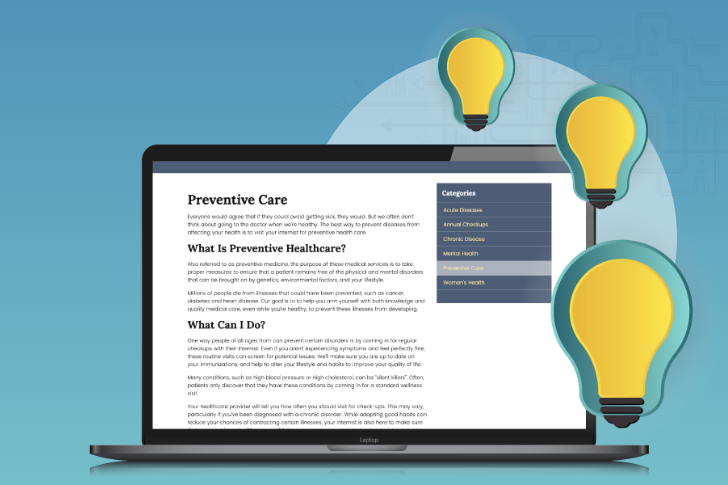Whether you’re writing for your practice website, your blog, an office newsletter or a flyer, the content included on your marketing materials will play an important part in communicating who you are and what your practice can offer to your existing and potential patients.
When writing copy for your medical practice, keep these tips in mind.
Keep it short
When writing for your patients, remember to keep sentences and paragraphs concise and to the point. Too much text on a page is intimidating and will lose reader interest. Content should be long enough to give value and brief enough to avoid boredom.
Choose headlines wisely
Compelling headlines can make a strong point, guiding your readers to the information they are looking for and compelling them to keep reading and take action.
Enhance with images
Augment the text on your webpages, newsletters or blog with relevant photos or images. Writing about your new office equipment? Introducing a new staff member? Include photos to supplement the content. Your readers will thank you for the visuals.
Avoid medical jargon
Remember, you are writing for your patients, not your colleagues. Keep your audience in mind when communicating through various marketing materials, otherwise you may lose them to confusing medical terminology.
Optimize for search
Search engines are constantly crawling your webpage content so make sure the content on your website is targeting the keywords you want to rank for by using best practice SEO.
Proofread
Don’t forget to edit your work for grammar and spelling errors. Obvious mistakes throughout your content are frustrating for readers and can reflect poorly on your practice.
By taking these writing tips into account, you can help create quality, compelling content for all of your marketing channels that retains reader interest and encourages patients to take a specific action.
Need help writing your website content? Contact an Officite Web Presence Advisor!



